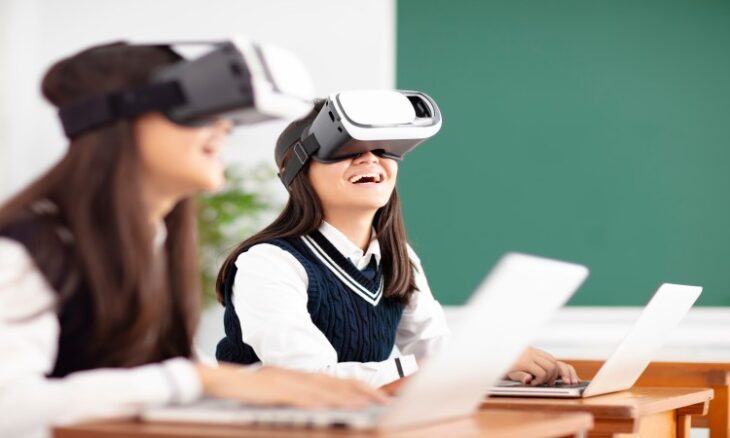Virtual reality reshapes classroom learning
Virtual reality is steadily transforming the way pupils learn, offering opportunities that extend beyond textbooks and traditional teaching methods. Last week, Arnall Middle School in Georgia hosted a series of virtual reality workshops led by Dr Phillip Sykes, the county school system’s Social Studies and Fine Arts Content Specialist. The sessions introduced students to a new style of interactive learning that is becoming increasingly popular across the district.
Sykes began incorporating virtual reality into lessons in 2023 after securing a $2,000 grant from the Georgia Department of Education. With the funding, he purchased several Meta Quest 2 headsets and soon began taking them into classrooms around the county. Since then, he has worked with hundreds of students and teachers, demonstrating how immersive technology can enhance learning in ways not easily achieved in standard classroom settings.
The approach has caught the attention of educators at Arnall Middle School. Inspired by the success of Sykes’ initiatives, the school made its own investment in virtual reality equipment, recognising its potential to enrich the learning experience. Principal Stefanie Easterwood explained that the school aimed to use available funding strategically, directing it toward resources that provide pupils with experiences they would otherwise miss. For many children, travelling to new locations or witnessing historical environments first-hand is not an option, but virtual reality helps bridge that gap.
During the workshops at Arnall, pupils explored the diverse regions and geographical features of Georgia. The sessions were conducted in eighth-grade social studies classes taught by Dr Arthur Teagle, Kristan Lynd, and Samiha Alexander. The hands-on experience made the lessons more engaging, with students responding enthusiastically as they navigated the virtual environments. Teachers observed a marked increase in attention and curiosity compared to more conventional methods of instruction.
The impact of this learning style was evident in individual moments. One student, for example, expressed excitement after using the headset to simulate a trip to the beach, an experience he had never previously enjoyed. Encounters like these underline the capacity of virtual reality to open new worlds for pupils, making abstract or distant concepts tangible and relatable.
Sykes’ efforts are not limited to Arnall Middle School. In earlier visits to East Coweta High School, students were able to immerse themselves in the ancient worlds of Greece, Rome, and Egypt. At Western Elementary School, younger pupils experienced life from the seat of a First World War tank. These exercises illustrate how technology can transport learners to places and events that would otherwise be confined to the pages of a history book.
The headsets also provide a vital resource for children from lower-income backgrounds, many of whom may never have the chance to travel or visit museums. Sykes highlighted the value of allowing a pupil to observe the conditions of a Civil War hospital or the lack of modern medicine during that era. By witnessing these details directly in a virtual environment, students gain a deeper appreciation of the human realities behind historical narratives.
For Sykes, the integration of virtual reality into education is about more than novelty; it is about creating lasting, meaningful connections with the material. The technology encourages pupils to see history and geography not as distant facts, but as experiences they can step into, observe, and reflect upon. As more schools adopt the practice, the role of virtual reality in shaping the future of education is likely to expand, offering countless children the chance to learn in ways once thought impossible.










